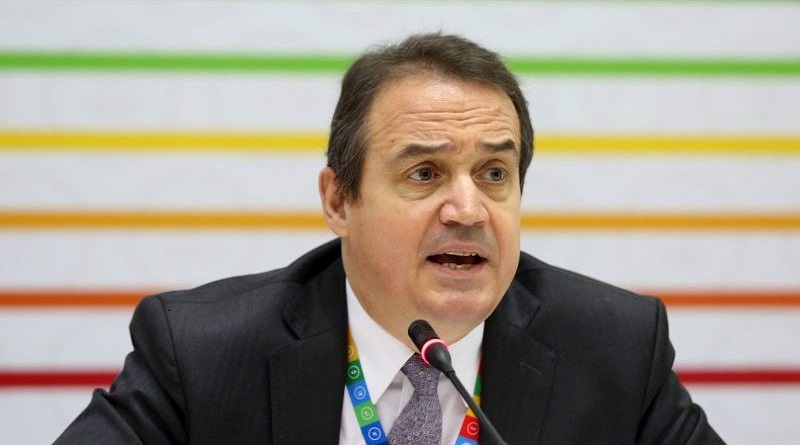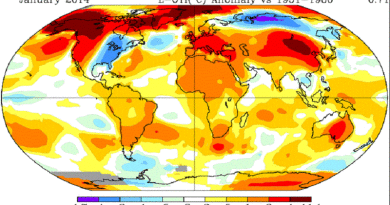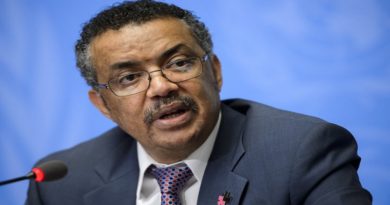GCF private sector conference explores how to break through finance barriers
The removal of barriers hindering global financial flows to developing countries could solve the climate finance paradox by unleashing USD 26 trillion in new climate investments by 2030.
This was one of Green Climate Fund (GCF) Executive Director Yannick Glemarec’s key messages during GCF’s annual Private Investment for Climate Conference (GPIC) now taking place virtually over two days.
International flows of finance “should particularly benefit developing countries, where the bulk of investment in low emission climate resilient infrastructure is to take place in the coming decades,” he said.
But that is not happening because “barriers exist at all stages of climate innovation – from incubation to early-stage growth and then during the phase of commercialising and deploying innovation,” added Glemarec. “They include policy and regulatory risk, as well as technical and above all financial barriers, particularly the lack of access to affordable, long-term project finance.”
GCF’s fourth private sector-focused climate conference, held only days before crucial global climate change negotiations in Glasgow, is exploring how to overcome these financial barriers by unleashing the entrepreneurial energies and vast resources of the private sector to fund climate action.
While emphasising the need to overcome the current shortfall in the pledge to provide developing countries with 100 billion annually by 2020, GPIC participants focused on the crucial role of the private sector to generate the trillions needed ultimately to address the climate crisis.
Costa Rica President Carlos Alvarado Quesada said the dangerous acceleration of global heating meant it was in richer countries’ best interests, based on both “global solidarity” and “self defence,” to help direct global finance flows to fund climate action in developing countries.
“Most of the solutions in climate change are in developing countries,” said the President, while pointing out the urgent need to close the “missing link” based on perceptions of financial risk in climate investments in these countries. “The planet is entering a very difficult phase, and every day is showing we are off track,” he said.
Gabonese Republic President Ali Bongo Ondimba also stressed the need for a united front to tackle current challenges. “COP26 will begin in Glasgow at a time when the COVID-19 pandemic has turned our societies, economies and way of life upside down,” he said in a recorded statement during the conference. “Collectively, we must ensure that the climate change targets on which our future generations depend are met.”
Gabonese Republic’s Minister of Water and Forests, the Sea and the Environment, Professor Lee White, added that with the right price incentives, it is possible for countries with high forest cover such as Gabon to be “carbon positive” by avoiding deforestation. “Why don’t we have a USD 2.5 billion fund to promote modern tropical agriculture in in the Congo Basin?” he asked.
Gabon is the first African country to receive payments for reducing carbon emissions under the multi-donor, UN-hosted Central African Forest Initiative’s (CAFI).
This year’s GPIC has brough together a board range of global leaders, executives, experts and thought leaders from business, governments, financial institutions, and technology companies.
A key focus of the conference has been highlighting the vast potential to generate finance at scale from blending private investments and public funds, including from GCF’s USD 10 billion climate finance portfolio.
President Alvarado pointed out GCF’s USD 271.3 million investment in a climate project in his country will support the domestic private sector build a light rail system, which will draw on the country’s electricity grid – comprising 99.5 percent renewables.
Acumen founder and CEO Jacqueline Novogratz also highlighted the crucial need to access strategic public finances, such as those provided by GCF, in Acumen’s ability to kickstart the growth of private off-grid solar companies in East Africa.
Acumen began investing in African clean energy companies from 2007, but plans by the impact investor to build on initial investments by drawing from other financial sources were unsuccessful.
“That is when the long-term capital, the flexible capital, of GCF played such a critical role,” said Novogratz. GCF’s partnership with Acumen resulted in the USD 110 million KawiSafi Ventures Fund which has supported the local private sector in providing 100 million African people with power – in a continent where 45 percent of the population lack access to electricity.
A number of GPIC 2021 participants also stressed the need to base long-term investments on new perceptions of business risk which account for climate change. Only in this way, will it be possible to create and develop green markets that generate large-scale profits.
Novogratz added though that while low-income communities and nations must be allowed to develop economically, “trade offs” in business approaches – which sometimes do not focus entirely on profits – will sometimes be necessary.
“We have to recognize that some of us have to be willing to trade, so that we can create a just, inclusive and sustainable world,” she said.
Convergence CEO Joan M. Larrea, meanwhile, said the use of blended finance is crucial in generating catalytic capital that draws on public or philanthropic sources to increase private sector investment in sustainable development.
While the institutional investors of the world are increasingly seeing the risks of inaction on climate change, there is still a need to use blended finance to kickstart major investments through the initial use of grants, patient capital, soft loans and junior equity, she said.
“It is not enough for governments and for the private sector to operate separately anymore. We need to rewire, or even short circuit, the wires of international finance if we are going to address our climate emergency,” said Larrea.
GCF will study the results of GPIC 2021 to see how it can further leverage its climate finance portfolio, amounting to USD 37.2 billion when accounting for co-financing, to deepen its private sector partnerships to support large-scale projects while also aiding the most climate vulnerable at the small scale.




